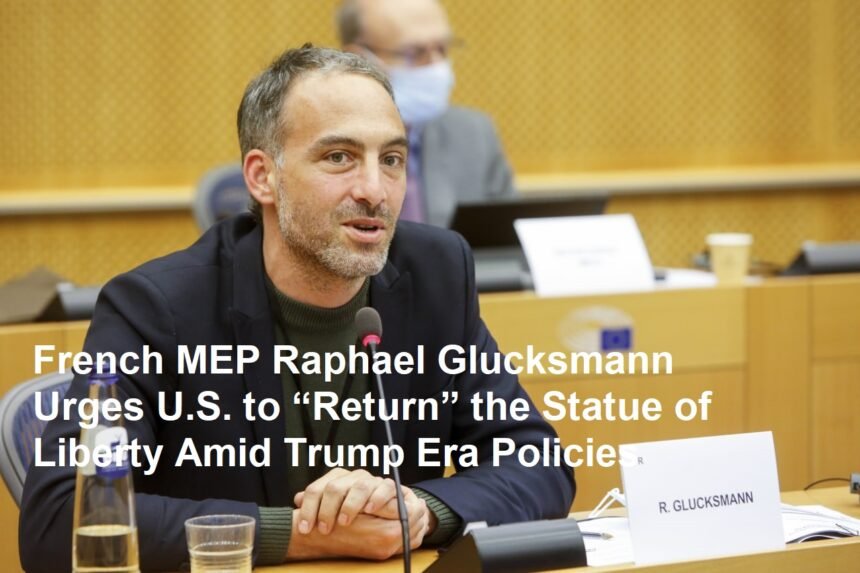In a stirring declaration that has ignited debate across the Atlantic, French Member of the European Parliament Raphael Glucksmann has called on the United States to “return” the Statue of Liberty—a symbol he believes has lost its true meaning under the current U.S. administration. According to Glucksmann, recent policies spearheaded by President Donald Trump run counter to the fundamental values the statue has represented since its inception.
Glucksmann, known for his outspoken progressive views, argued that the Statue of Liberty, originally gifted by France to the United States in 1886, was conceived as an emblem of hope, freedom, and human dignity. “The statue stands for the promise of a society that embraces liberty, welcomes the stranger, and defends human rights,” he stated in a recent address. “When those values are compromised by policies that foster division and exclusion, we are forced to question whether this symbol still belongs to a nation that upholds these principles.”
The French MEP’s comments come at a time when the U.S. has been embroiled in controversies over immigration, national security, and populist rhetoric. Critics of the Trump administration have long argued that policies limiting immigration and altering international cooperation betray the spirit of openness and refuge that the Statue of Liberty was meant to embody. Glucksmann’s call is not simply a political provocation; it is a symbolic plea for the United States to reexamine the ideals that once united it with its historic benefactors.
Historically, the Statue of Liberty was designed by Frédéric Auguste Bartholdi and financed partially by the French people, serving as a tangible reminder of the Franco-American friendship and shared commitment to democracy. Over time, it has become an international beacon for immigrants and a global symbol of freedom. However, Glucksmann contends that recent shifts in U.S. policy under President Trump have undermined these cherished ideals. “If the emblem of liberty is discredited by the actions of those in power, then it loses its capacity to inspire,” he explained.
Supporters of Glucksmann’s stance argue that the symbolism of national monuments should never be divorced from the political and moral environment they inhabit. They claim that America’s historic openness to immigrants and its role as a sanctuary for the oppressed are not merely relics of the past but are essential to its identity. By calling for the “return” of the Statue of Liberty, Glucksmann implies that the United States should either restore the foundational values represented by the monument or risk having it reclaimed as a symbol by the very nations that once helped create it.
Detractors, however, see the proposal as an impractical and overly symbolic gesture that overlooks the complex realities of national identity and heritage. They contend that the Statue of Liberty, firmly entrenched in American cultural and historical narratives, cannot simply be repatriated or disassociated from its location on Liberty Island in New York Harbor. “It is unrealistic to think that a single monument can be taken away as a solution to deep-seated political issues,” remarked one U.S. commentator, urging instead for policy reforms that address the root causes of division.
Glucksmann’s remarks have thus ignited a broader conversation about the role of symbolism in politics. His proposal challenges both political leaders and citizens to reflect on whether the symbols they cherish are living up to their promises. In a climate of increasing polarization, the debate over the Statue of Liberty underscores the tension between historic ideals and contemporary realities.
As the controversy unfolds, many observers note that Glucksmann’s dramatic call to “return” the Statue of Liberty is less about the physical monument and more about the urgent need for a moral and political realignment. Whether his words will lead to substantive changes in U.S. policy remains uncertain, but they have certainly sparked a conversation about the values that define nations and the symbols that represent them.












